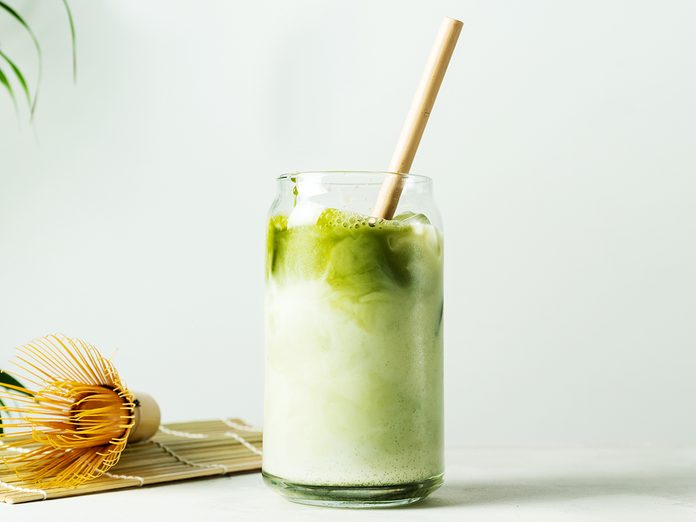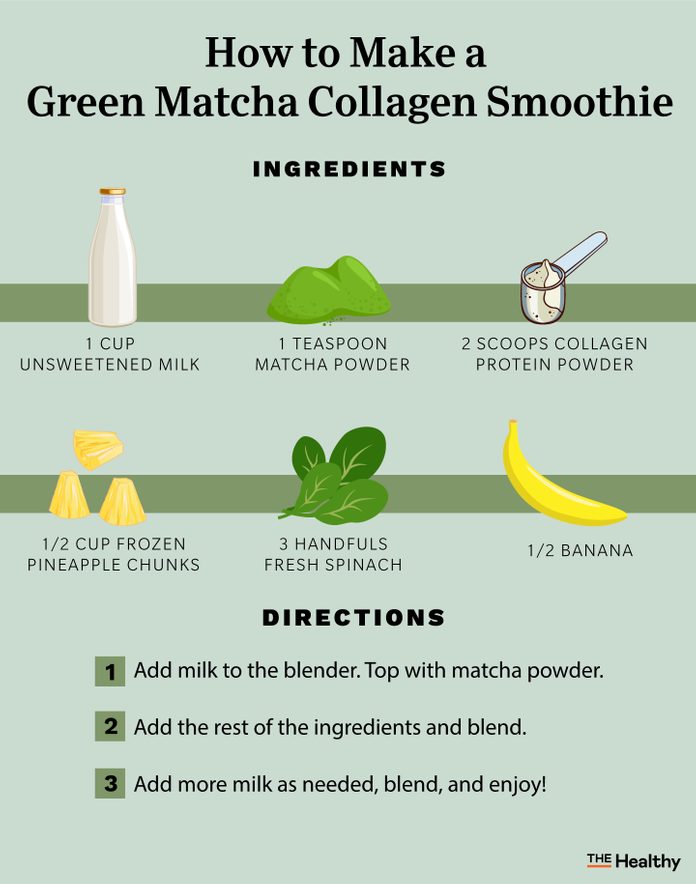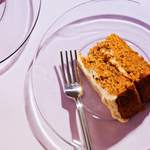A Matcha Smoothie Recipe This Dietitian Makes on Repeat

Curious how to incorporate more matcha into your diet? A registered dietitian breaks down the health benefits of matcha tea and shares her favorite matcha smoothie recipe.
Coffee lovers swear by their favorite caffeinated beverage, but there’s another drink with just as much fervor behind it: matcha. Although matcha is traditionally sipped as a tea, these days, people add the earthy green powder to just about everything. Yes, matcha lattes are probably the most popular way to get it, but you’ll also find matcha in protein bars, pancakes, and more.
One delicious way to incorporate matcha into your diet is by blending it into a smoothie. Learn whether matcha is a healthy choice, then try my recipe for my favorite matcha smoothie.
(Related: Is Olive Leaf Tea The New Matcha? Everything You Need to Know)
What exactly is matcha?
Matcha is a traditional Japanese preparation of green tea that’s been used for centuries for ceremonial and medicinal purposes. Unlike regular green tea, which uses loose dried tea leaves, matcha is a mixture of finely ground green tea leaves and hot water. It creates a bright green tea with lots of nutrients.
In fact, matcha is more nutrient dense than regular green tea because you drink the leaves themselves (albeit in powdered form). This provides the full spectrum of nutrients. With green tea, you’re steeping tea leaves in water then discarding them.
Is matcha worth trying?
Food trends come and go, and some of them are healthier than others, so I’m always skeptical about investing time and money into adding so-called superfoods into my diet. But matcha is worth the hype. It’s a nutrient-dense alternative to your average caffeinated beverage because it has so many antioxidants. It’s packed with nutrients and has been linked to a host of health benefits.
And it’s versatile. It pairs well with milk or milk alternatives, such as almond, coconut, or oat milks. You can add it to various recipes, like baked goods, pancakes, and smoothies. Plus, it just tastes delicious. Good-quality matcha has an earthy and grassy flavour, with no bitterness.
Antioxidant benefits of matcha
Matcha is a nutrient powerhouse, and it’s jam-packed with antioxidants that help protect our health. Green tea, like matcha, is high in a group of antioxidants called catechins, which help neutralize harmful molecules called free radicals—they cause inflammation in the body. When you’re low on antioxidants and free radicals begin to accumulate, you can suffer oxidative stress, raising your risk of chronic diseases like heart disease, type 2 diabetes, and certain cancers.
Matcha is especially high in epigallocatechin gallate (EGCG), a catechin that experts believe has several health benefits, including weight loss and heart health. While more research needs to be done to determine the exact health benefits of EGCG, a review study in Biomedicine & Pharmacotherapy found that EGCG protects against cardiovascular disease in a few ways, including reducing arterial plaque formation, abnormal heart enlargement, and heart attack risk.
(Related: 11 Health Benefits of Green Tea You Haven’t Heard Before)
Other nutrition benefits of matcha
Although results are mixed, some studies have found that green tea is beneficial for weight loss. One review of 11 studies, published in the International Journal of Obesity, found that the EGCG in green tea has a positive effect on weight loss and weight management. Another study in the European Journal of Clinical Nutrition indicates that green tea may reduce appetite, interfere with fat absorption, and increase metabolism, all of which are beneficial for weight loss.
Research also suggests green tea may decrease the rates of some forms of cancer and liver disease, according to the Journal of the American College of Nutrition. Plus, research in the journal Molecules found that catechins in green tea may be good for brain health. Matcha also contains L-theanine, a compound thought to have a calming, relaxing effect, sans drowsiness. Note that matcha has about 64 mg of caffeine per cup. In comparison, a cup of green tea has about 18 mg of caffeine, and a cup of brewed coffee has 96 mg. More research is necessary to determine exactly how beneficial matcha is for our health, but the current literature is promising for both the body and the mind.
How to add matcha to smoothies
Now that you know why matcha is worth adding to your diet, let’s talk about the best way to get more of this superfood. Want to try it as a tea? Mix one teaspoon of matcha powder with hot water. A sifter and bamboo matcha whisk are traditionally used to help break up any clumps that may form when mixing the powder and water together.
You can skip the sift-and-whisk step when you add matcha to smoothies. To prevent clumps in your smoothie, I recommend adding the matcha powder to your blender directly after adding your liquid base (my go-to is almond milk). The key to a perfect matcha smoothie is balancing the grassy, earthy flavour of matcha with creamy, sweet ingredients like bananas and milk or milk alternatives. Don’t forget that matcha contains caffeine. If caffeine keeps you up at night, make yours a breakfast smoothie.
Green Matcha Collagen Smoothie

This green matcha smoothie not only packs an antioxidant punch from the matcha, but it also includes vitamins K and A, and manganese, folate, and potassium from the spinach and banana. You’re also getting a slight energy boost from the caffeine in matcha, making it a great replacement for your morning cup of coffee. The collagen gives this smoothie a protein boost and may help support healthy hair, skin, and nails. It’s the perfect nutrient-dense drink to start your day. The best part? It only takes a few minutes to make.
Serves 1
Ingredients:
- 1 cup unsweetened milk of your choice, such as almond or coconut
- 1 teaspoon matcha powder
- 2 scoops collagen protein powder
- 3 handfuls fresh spinach
- 1/2 cup frozen pineapple chunks
- 1/2 banana
Instructions:
Add the milk to a blender. Top with matcha powder. Add the rest of the ingredients. Blend. Add more milk as needed. Enjoy!
Next: 16 Superfood Powders to Add to Smoothies, Baking and More




